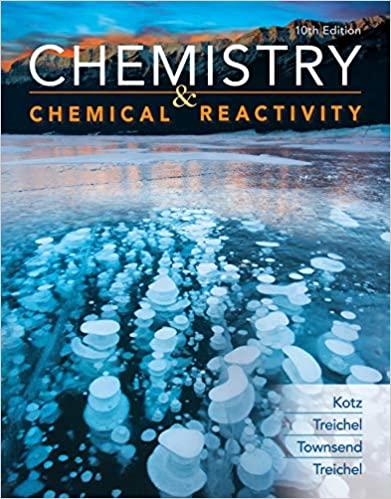A compound containing C, H, N, and O is burned in excess oxygen. The gases produced by
Question:
A compound containing C, H, N, and O is burned in excess oxygen. The gases produced by burning 0.1152 g are first treated to convert the nitrogen-containing product gases into N2, and then the resulting mixture of CO2, H2O, N2, and excess O2 is passed through a bed of CaCl2 to absorb the water. The CaCl2 increases in mass by 0.09912 g. The remaining gases are bubbled into water to form H2CO3, and this solution is titrated with 0.3283 M NaOH; 28.81 mL is required to achieve the second equivalence point. The excess O2 gas is removed by reaction with copper metal (to give CuO). Finally, the N2 gas is collected in a 225.0-mL flask, where it has a pressure of 65.12 mm Hg at 25°C. In a separate experiment, the unknown compound is found to have a molar mass of 150 g/mol. What are the empirical and molecular formulas of the unknown compound?
Step by Step Answer:

Chemistry And Chemical Reactivity
ISBN: 9780357001172
10th Edition
Authors: John C. Kotz, Paul M. Treichel, John Townsend, David Treichel





